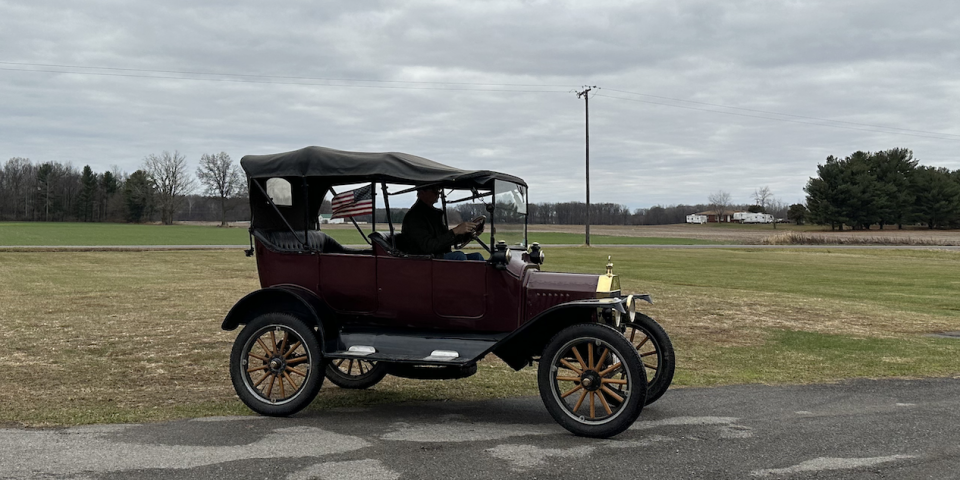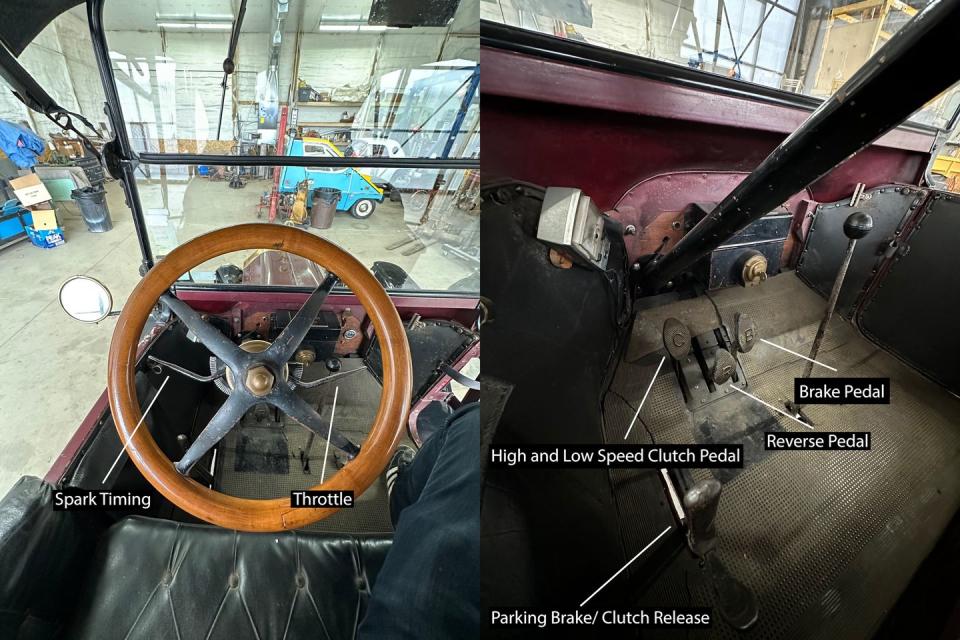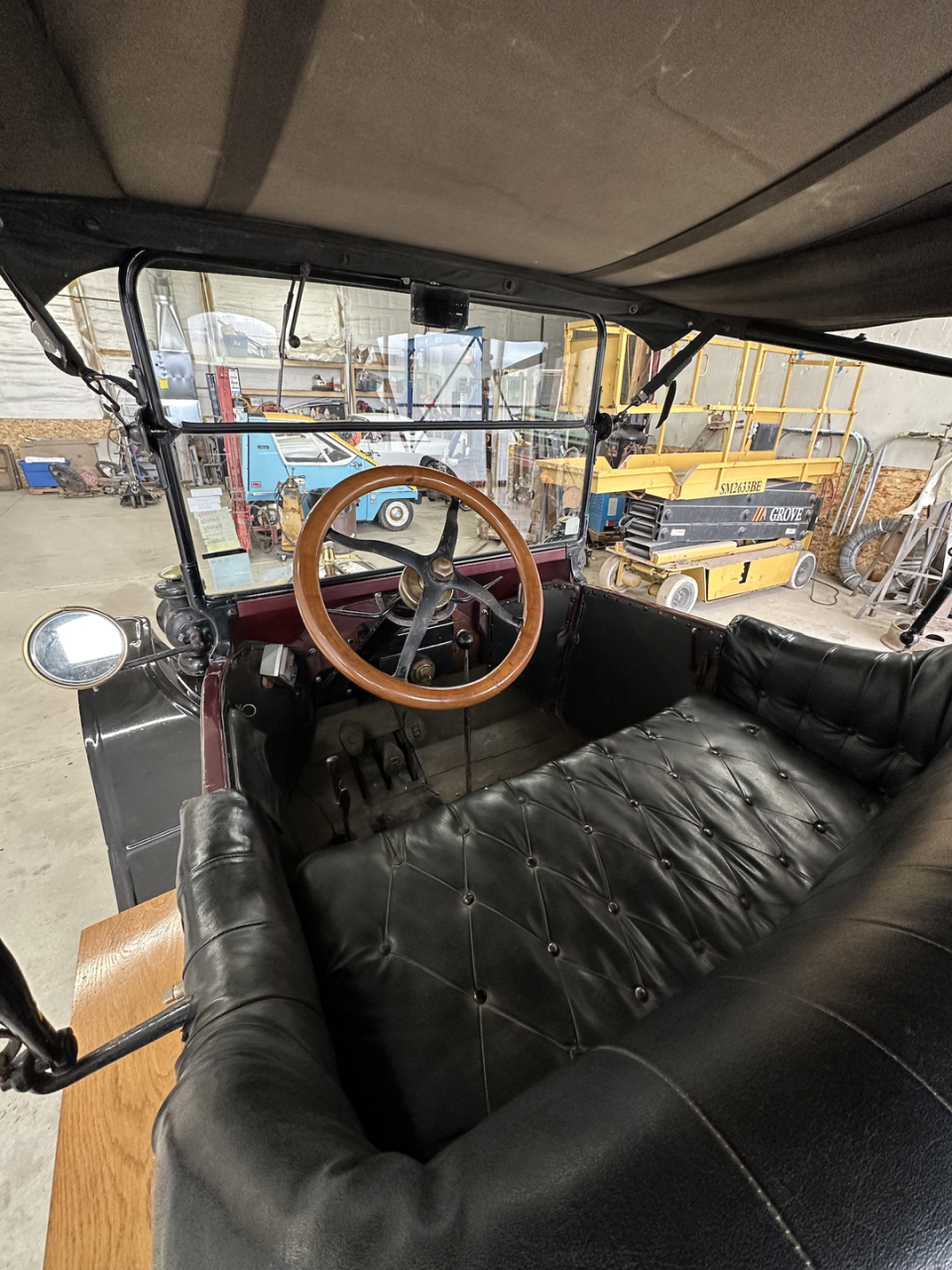Learning to Drive a Ford Model T Was Challenging but Rewarding

Imagine stepping off a plane in a foreign country. Emerging from the automatic sliding doors, a lot looks the same, but there's always something reminding you that you're not at home. Buses and taxis swarm to pick up new arrivals, but the signs are in a language you cannot read, and you pay the fare using a bill decorated with a historical figure who never appeared in your schoolbooks. Maybe you stop in a McDonald's, expecting to get a taste of home, only to find dishes like the taro pie that replaces apple pie on the Mickey D's menu in China.
Driving a 1915 Ford Model T elicits similarly conflicting feelings of familiarity and foreignness. The Model T is a car, with wheels and tires, pedals and levers, and a circular steering wheel. But it's not a car as we know it today. Three pedals protrude from the floor, but none of them control the throttle, and the one you would expect to be the gas pedal instead stops the car. Seatbelts and airbags are nonexistent, of course, but even windows were a luxury that many Model Ts did without. And unlike the computer-controlled machines of today, in the Model T, the driver had to dial in the fuel mixture and spark timing on their own, requiring a close and attentive relationship with the vehicular beast.
Despite going out of production nearly a century ago, the Model T still ranks among the top ten bestselling cars of all time. Across a 19-year period, Ford built more than 15 million Model Ts thanks to Ford's pioneering transition from traditional hand-building to the assembly line. That made the Model T one of the world's first mass-produced cars and certainly the most successful of its era, and with such a vast number built, there remains a healthy enthusiasm for keeping Tin Lizzies on the road. So when we were offered the chance to drive a Model T, we leaped at the opportunity to learn how to operate the car that put America on wheels and has captivated millions of people for decades.
Learning the Ropes

Clamber into the Model T's driver's seat—which is really more like a sofa jammed into a metal bathtub—and you are met by a dizzying array of controls. First off, none of the three pedals acts as the accelerator. Instead, throttle inputs are controlled by a stalk mounted behind the steering wheel on the right, where you might find the windshield-wiper activator on a modern car.
The stalk on the left side of the steering wheel is the spark advance, which controls the spark timing. When starting the Model T, the lever should be in the highest position to fully retard the timing, and once the engine is running the timing is advanced to smooth out the idle.
The brakes, meanwhile, are modulated by the pedal on the far right side. While it's handily labeled with a B, reprogramming our brain to remember that the right pedal slows the Model T instead of propelling it forward was one of the most challenging issues to master. Unlike today's cars, the Model T's brake slows the transmission, although this example had auxiliary disc brakes fitted at the rear, a common upgrade since the original braking system was particularly weak.

The leftmost pedal is usually described as the clutch, but it doesn't operate like the clutch on modern manual-transmission cars. Instead of a range of motion that allows for precise modulation, the Model T's clutch has three distinct positions and acts more as a gear selector. The middle, halfway-down position puts the Model T into neutral, while pressing the pedal to the floor puts the car into the "low gear." Getting moving and into first gear requires slowly pressing the clutch down while easing onto the throttle—using the steering-wheel-mounted stalk, remember—and off the brake. Once underway, letting the pedal all the way out puts the Model T into the high gear necessary for normal cruising speeds. Finally, the middle pedal is used to activate the reverse gear and can, in a pinch, aid the brakes in slowing the car.

 Yahoo Autos
Yahoo Autos 